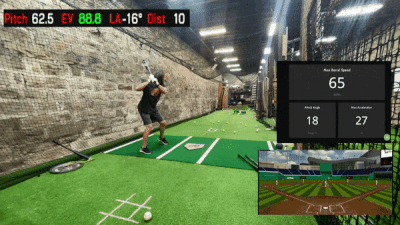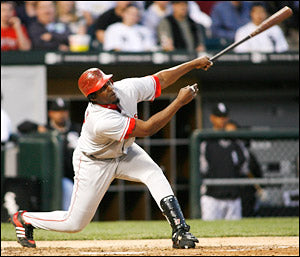The USA Baseball Long-Term Athlete Development (LTAD) model is a groundbreaking approach to nurturing and growing athletic talent. This model provides a structured pathway for athletes, taking them from their first introduction to baseball to the pinnacle of their competitive careers. It emphasizes the importance of a long-term vision for athlete development, as opposed to focusing on short-term victories. In this blog post, we will delve into the intricate details of the LTAD model and explore its potential in shaping the future of baseball.
The Principles of LTAD
At its core, the LTAD model operates on a set of fundamental principles designed to foster the optimal development of athletes. It recognizes that athletes mature at different rates, both physically and mentally, and that a one-size-fits-all approach to training is insufficient. By considering these unique developmental timelines, the LTAD model provides a flexible yet structured pathway to success.
Furthermore, the model emphasizes the importance of enjoyment and lifelong participation in sport. It advocates for a holistic approach to athlete development, acknowledging that physical conditioning, mental resilience, tactical understanding, and technical skills are all integral elements of a successful athlete.
The Stages of the LTAD Model
The LTAD model is divided into six main stages, each designed to cater to athletes at different stages of their development.
Discovery Stage: Introduction to Baseball
At the Discovery stage, the primary focus is on fun and enjoyment. This stage is about fostering a love for the game, where the objective is to develop basic motor skills and introduce fundamental baseball concepts. It is during this stage that children start to develop their athletic literacy, learning the ABCs of athleticism—Agility, Balance, Coordination, and Speed.
Fundamental Stage: Building Basic Skills
As athletes transition into the Fundamental stage, the focus shifts towards developing basic baseball skills. Athletes learn the basics of throwing, catching, and hitting, while still emphasizing the fun aspect of the game. This stage also champions the importance of multi-sport participation. Engaging in various sports can enhance the overall athletic development of young athletes, providing a broader range of motor skills, and preventing early burnout from over-specialization.
Learn to Train Stage: Honing in on Baseball Specific Skills
The Learn to Train stage introduces more advanced baseball-specific skills and understanding of the game. The training becomes more structured, but it's essential to maintain a balanced approach, keeping the sessions enjoyable and engaging. This stage is also when athletes start to learn about the importance of fitness and conditioning, nutrition, and recovery strategies.
Train to Train Stage: Nurturing Potential
At the Train to Train stage, the development becomes more intensive. Athletes are now focusing on physical, mental, and emotional development, in addition to honing their baseball skills. Strength and conditioning programs are integrated into their routine, preparing them for the rigors of high-level competition. The approach remains athlete-centered, ensuring their well-being is prioritized.
Train to Compete Stage: High-Level Training and Competition
The Train to Compete stage marks a significant shift towards high-level training and competition. Athletes are expected to optimize their skills and performance, gearing up for more competitive play. Training programs become more individualized, targeting specific areas of improvement. The importance of mental preparation and resilience is also emphasized at this stage.
Train to Win Stage: The Elite Athlete
Finally, in the Train to Win stage, athletes are at the peak of their game, preparing for elite-level competition. The focus is on maximizing performance and effectiveness on the field. Recovery strategies and injury prevention become crucial components of their training, as maintaining peak physical condition is vital at this level.
Why Multi-Sport Participation is Important in Early Stages
The LTAD model strongly advocates for multi-sport participation in the early stages of athletic development. This approach is beneficial for several reasons. Firstly, playing multiple sports can enhance overall athletic development by improving motor skills, agility, balance, and coordination. Athletes can transfer these skills across different sports, enhancing their versatility and adaptability.
Secondly, multi-sport participation can prevent overuse injuries often seen in early specialization. By playing different sports, athletes use different muscle groups and movement patterns, reducing the risk of repetitive strain injuries.
Lastly, engaging in multiple sports can keep things fun and interesting for young athletes. It can help maintain their motivation and enthusiasm for sport in general, which is crucial for their long-term commitment to staying active and healthy.
The Importance of Age-Appropriate Training
One of the key principles of the LTAD model is the concept of developmentally appropriate activities. This means that the type, volume, and intensity of training should align with the athlete's stage of physical, mental, and emotional development.
Early specialization and over-training pose significant risks to young athletes, including increased risk of injuries, psychological stress, and burnout. By ensuring that training activities are age-appropriate, the LTAD model seeks to mitigate these risks while promoting optimal athletic development.
The Role of Parents, Coaches, and Organizations in the LTAD Model
Parents, coaches, and organizations all play crucial roles in the successful implementation of the LTAD model. They are the primary support system for athletes, providing guidance, encouragement, and resources.
Parents play a vital role in fostering a positive sporting experience, promoting a balanced approach to training and competition. Coaches, on the other hand, are responsible for delivering age-appropriate training programs, nurturing athlete development, and creating a positive, supportive training environment.
Sporting organizations also have a part to play in providing opportunities for competition and training that align with the LTAD model. They can also promote education about the LTAD principles among coaches, parents, and athletes, ensuring a unified approach to athlete development.
Monitoring and Adapting the LTAD Model
The LTAD model is not a rigid framework. It recognizes the need for ongoing assessment and adjustments based on individual progress and development. Coaches and trainers must monitor athletes' development continuously, adapting training programs and strategies to suit their evolving needs.
For example, an athlete may need additional focus on strength and conditioning, while another may need more support in developing mental resilience. By maintaining a flexible approach, the LTAD model ensures that athletes receive the support they need to reach their full potential.
Case Studies: Success Stories from the LTAD Model
The LTAD model has seen numerous success stories, with athletes successfully progressing through the stages to reach their full potential. These stories serve as powerful testaments to the efficacy of a structured, long-term approach to athlete development.
For instance, consider the journey of a young athlete who started playing baseball at the age of 6. Through the LTAD model, he was introduced to multiple sports, developed a strong athletic base, and gradually honed his baseball skills. Today, he is a successful professional baseball player, attributing his success to the holistic and long-term approach of his training.
These success stories serve as a reminder of the transformative power of a well-structured, long-term approach to athlete development. They illustrate the potential of the LTAD model in nurturing athletic talent and contributing to the future of baseball.
Conclusion
In conclusion, the USA Baseball LTAD model offers a comprehensive, adaptable framework for athlete development. It emphasizes the importance of a long-term, holistic approach, recognizing the unique development pathways of each athlete. The model champions the principles of fun, multi-sport participation, age-appropriate training








